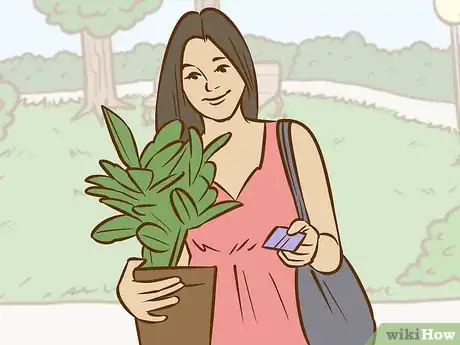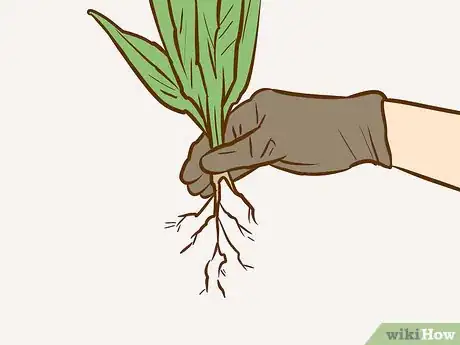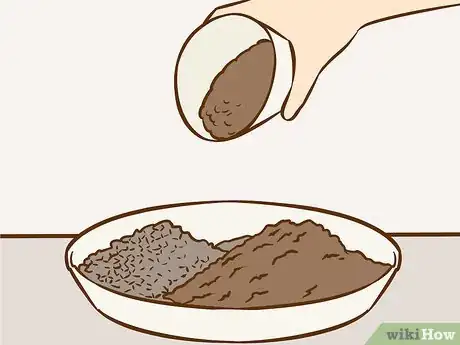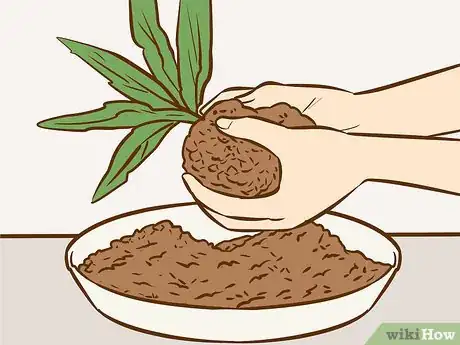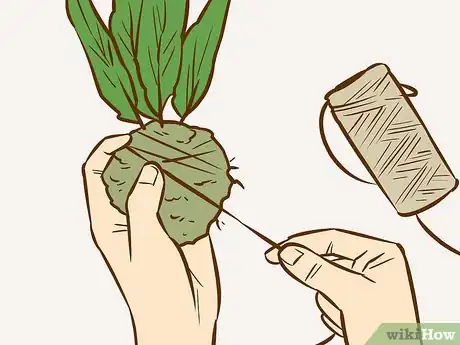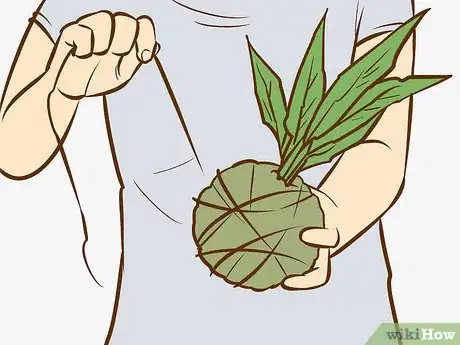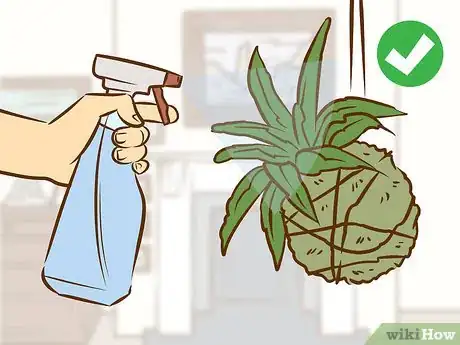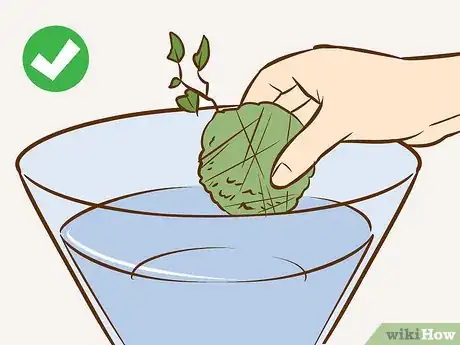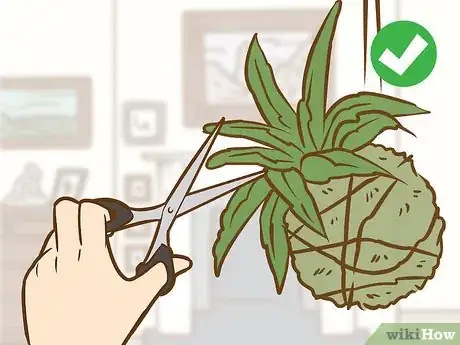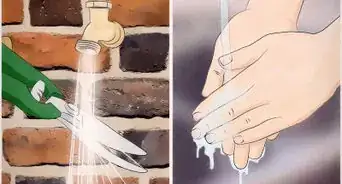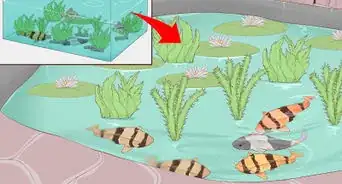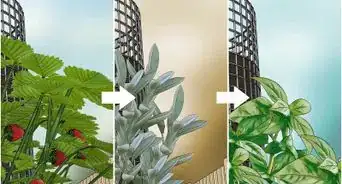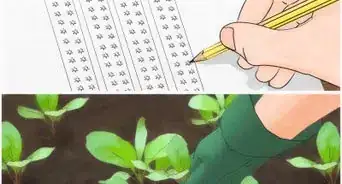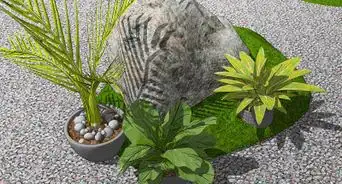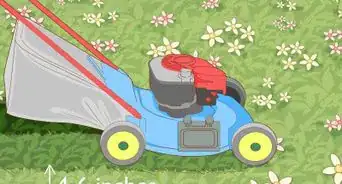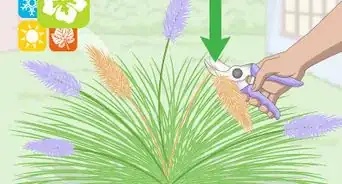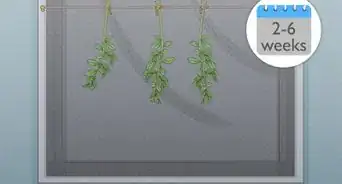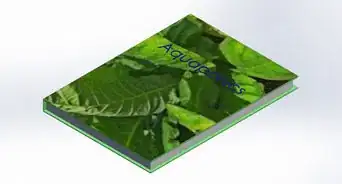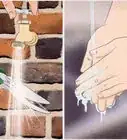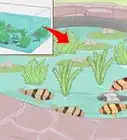This article was co-authored by wikiHow Staff. Our trained team of editors and researchers validate articles for accuracy and comprehensiveness. wikiHow's Content Management Team carefully monitors the work from our editorial staff to ensure that each article is backed by trusted research and meets our high quality standards.
This article has been viewed 71,354 times.
Learn more...
A kokedama is a hanging garden. Making a kokedama for your home can be a fun DIY project. To make a kokedama, you first need to create soil balls using moss and soil. From there, wrap your plants in the balls and hang them in your home. Water and trim your plants regularly to keep your kokedama healthy.
Steps
Creating Your Soil Ball
-
1Select a variety of plants. You can use any types of plants for a kokedama as long as they will fit comfortably in your home when hanging. The plants will eventually be hung from ceiling hooks using twine. Kokedama are traditionally made up of a variety of different plants, so invest in variety when building a kokedama. Stop by a greenhouse and pick up some potted plants to build your kokedama. You can also take in plants from outdoors if you garden.[1]
-
2Remove the plant by its roots. Whether you're using potted plants or outdoor plants for your kokedama, the first step is to remove the plants by their roots. Remove the plant from the pot or ground. Gently use your fingers to remove the soil from around the roots. For plants with very fine roots, rinse them in the sink to remove the soil.
- When bringing a plant in from outdoors, always check the leaves for bugs and other pests before bringing it inside.
Advertisement -
3Mix your moss and bonsai soil. Take a plastic grocery bag and bucket. Put on some gloves. Use peat moss and bonsai soil for your kokedama. Using a 7:3 ratio of moss to soil, mix your moss and soil together until you have an even mixture.
- You need enough moss and soil to cover every plant's roots in a ball of soil and moss. The precise amounts will vary depending on how big of a garden you're making.
-
4Make a soil ball. Remove a chunk of soil and moss from the bucket or plastic bag. Use your hands to roll it into a thick, firm ball. Make a ball big enough to completely cover a plant's roots. When you're done, set the ball aside.
-
5Secure the plant's roots with moss. Use sphagnum moss, which you can buy online or at a greenhouse. Wrap the moss around the plant's roots several times until the roots are covered completely. Then, wrap some twine around the plant's roots to secure them.
- The amount of moss you need will vary depending on how big your ball is.
-
6Sandwich the roots in your ball. Break your ball in half. Sandwich your plant's roots around the ball of moss and soil. Then, pat the ball together again so it's firmly secured around the roots.[2]
Wrapping and Hanging Your Plants
-
1Cover your ball in sheep moss. Wrap a layer of sheet moss around your ball. You can buy sheet moss at a greenhouse or online. Get a full layer of sheet moss surrounding the ball.[3]
- The amount of moss you need varies depending on the size of your ball.
-
2Use twine to secure the ball. Wrap twine around the ball as needed to secure the sheet moss. Tightly circle the twine around the ball until everything holds together. You should be able to lift and move your ball without soil or moss spilling.[4]
-
3Attach a loop for hanging. Take another piece of twine. Use a piece as big as you want considering where you're going to hang your kokedama. Tie both ends of the twine around the twine securing the plant. You should now have a plant on a string you can hang up.[5]
-
4Hang your plants. Choose a spot in your home to hang your kokedama. Place your plants directly in front of a north facing window if possible. If you don't have a north facing window, hang the plants two to three feet from a south, west, or east facing window.[6]
Maintaining Your Kokedama
-
1Mist your plants daily. Each day, lightly mist your plants with tap water in a spray bottle. You can also place a tray of pebbles and water underneath the plants to add necessary humidity.[7]
-
2Water your plants regularly. You water kokedama plants by soaking them in a bowl of room temperature water for 10 minutes. Drain the soil ball in a colander until it stops dripping and then rehang the plants.[8]
- Kokedama plants should be watered when they start to feel light and the leaves turn brown.
-
3Trim dead leaves regularly. Watch your plants closely. When you notice any dead or brown leaves, use a pair of scissors or plant sheers to remove them.[9]
- Brown leaves that appear regularly are a sign you're not watering your plants often enough.
-
4Repot as your plants grow. As the plants grow, the roots will begin poking through the moss and soil balls. At this point, you need to repot them with new balls. For most plants, this is necessary about once or twice a year.[10]
Community Q&A
-
QuestionWhat sort of plant is suitable for this?
 Community AnswerIndoor ferns are great for kokedama. Also, ivy and trailing Tradescantia, such as Tradescantia zebrina, are good choices.
Community AnswerIndoor ferns are great for kokedama. Also, ivy and trailing Tradescantia, such as Tradescantia zebrina, are good choices.
References
- ↑ https://bloomzine.com/garden/kokedama-how-to32014
- ↑ https://www.good.is/articles/build-your-own-string-garden-in-7-steps
- ↑ https://www.good.is/articles/build-your-own-string-garden-in-7-steps
- ↑ https://www.good.is/articles/build-your-own-string-garden-in-7-steps
- ↑ http://www.goodhousekeeping.com/home/gardening/how-to/a37931/how-to-make-hanging-kokedama-garden/
- ↑ http://www.goodhousekeeping.com/home/gardening/how-to/a37931/how-to-make-hanging-kokedama-garden/
- ↑ http://www.goodhousekeeping.com/home/gardening/how-to/a37931/how-to-make-hanging-kokedama-garden/
- ↑ http://www.bhg.com/gardening/houseplants/diy-kokedama/
- ↑ http://www.goodhousekeeping.com/home/gardening/how-to/a37931/how-to-make-hanging-kokedama-garden/
About This Article
Making a kokedama, or hanging garden, is a fun project that you can do at home. Start by removing some potted or outdoor plants by their roots. Then, mix a 7 to 3 ratio of peat moss to bonsai soil. Use your hands to pick up a chunk of the mixture and roll it into a thick, firm ball that will cover your plant’s roots. Wrap sphagnum moss around your plant’s roots until they’re completely covered, then wrap some twine around the roots to secure them. Break the soil ball in half, sandwich the roots between the halves, then pat the ball together again. Cover the ball in sheet moss and secure the ball with twine. Use another piece of twine to hang the plant. To learn how to maintain your kokedama, keep reading!
